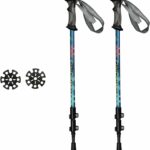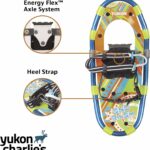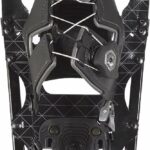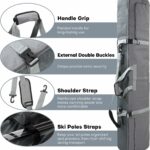You’re getting ready for your winter getaway, and all the excitement is rushing in. You’ve packed your bags and are mentally preparing for that adrenaline-pumping ride on the snowy mountain slopes. However, one question keeps popping up in your mind “how much does a snowboard weigh?”. This article is going to provide you with the crucial information you need to get on those slopes more confidently and be more informed about your snowboarding kit. Before long, you’ll be gliding on snow like a pro, acing every twist and turn. Get ready to embrace a comprehensive exploration on the weight of a snowboard and how it influences your ride.
Concept of Snowboard Weight
Snowboarding, an exhilarating winter sport that has taken the world by storm, is not solely about strapping onto a board and then exploring a snow-covered terrain. There’s a lot more that goes into mastering this exciting activity. One aspect that often takes fresh boarders by surprise is the snowboard’s weight. It can drastically influence the rider’s performance, ride quality, maneuverability, and the learning curve, especially for beginners.
Understanding the role of weight in snowboarding
To better understand how snowboard weight comes into play, think of this – your snowboard is your only contact point with the snow. It dictates how you carve, turn, catch air, and even come to a halt. A heavier snowboard tends to be more stable and better at cutting through rough terrains. However, it can be quite challenging to maneuver, leading to a steep learning curve for novices. Conversely, a lighter snowboard offers better control and is easier to ride, making it excellent for freestyle or park riding.
Importance of knowing your snowboard’s weight
Snowboarding is all about balance and control—knowing your snowboard’s weight aids in establishing this control. After all, you will be guiding the board through various terrains, weather conditions, and performing diverse riding styles. Knowing how much your snowboard weighs allows you to anticipate its response, hence allowing you to adapt your body movement and overall riding style accordingly.
Factors Influencing Snowboard Weight
Several aspects influence the weight of a snowboard. Let’s take a closer look at these factors.
Materials used in snowboard construction
The majority of modern snowboards have a wood core because of its lightness, flexibility, and excellent shock absorption ability. However, boards featuring a foam core also exist and are lighter. Apart from the core, laminates, steel edges, base materials, and the top sheet can also influence the snowboard’s weight.
Size and dimensions of the snowboard
Naturally, a longer and wider snowboard will weigh more than a shorter and narrower one because it contains more material. Every additional inch adds a substantial amount of weight to the snowboard.
Type of snowboard- freestyle, freeride, all-mountain, splitboard
The type of snowboard you choose will directly influence its weight. Freestyle snowboards, designed for tricks and park riding, are light to facilitate jumps and turns. Freeride snowboards, excellent for backcountry and ungroomed conditions, are a bit weighty for better stability. All-mountain snowboards lie somewhere in between. Splitboards, meant for uphill travel, are the heaviest because they incorporate extra hardware.
Additional accessories and bindings
The weight of your bindings and any other extras you mount onto your snowboard also adds up in the overall weight of your board set up. For example, sturdier, high-end bindings are typically heavier than their basic counterparts.
Average Weight Range of Snowboards
The weight of a snowboard can vary drastically depending on several factors. However, there’s a general weight range for both adult and children snowboards.
Average weight of adult snowboards
An adult snowboard typically weighs between 5 to 10 lbs (2.2 to 4.5 kg), with the average weight being about 7 lbs (3.2 kg). But remember, this can vary based on the type, size, materials, and extras.
Average weight of children’s snowboards
You can expect a child’s snowboard to weigh considerably less than an adult’s. In general, children’s snowboards range from 2 to 4 lbs (0.9 to 1.8 kg), which is much more manageable for their small stature and strength levels.
Variation in weights across different snowboard brands
Every brand has a unique approach to designing their snowboards, which can lead to weight differences. Some brands prioritize lightweight designs, while others focus more on durability and performance, which may increase the weight.
Detailed Weights of Specific Snowboard Models
Every snowboard model has a unique weight assigned to it.
Weights of popular snowboard models
The Burton Custom, a popular all-mountain board, weighs around 5.5 lbs (2.5 kg). The Salomon Assassin, another well-loved model, weighs about 6.5 lbs (3 kg). For those into splitboarding, the Jones Solution weighs nearly 7 lbs (3.2 kg) without bindings.
Factors contributing to the weight difference in specific models
Different models feature varied construction materials, lengths, widths, profiles, and overall design ethos. How brands marry these factors contributes to the specific weight of a snowboard model.
Snowboard Weight and Rider Experience
The weight of your snowboard can impact your riding experience based on your skill level.
How snowboard weight affects beginner’s learning curve
For beginners, a lightweight board is often a better choice. It’s easier to turn, maneuver, and carry, leading to a less steep learning curve. However, be cautious about extremely light boards as they may lack the stability required to learn effectively.
Influence of snowboard weight on experienced rider’s performance
Experienced riders often have a clear idea of their preferred riding style and conditions. Hence, they tend to select the board’s weight based on their needs. For instance, heavier boards are great for high speeds and rough terrains, while lighter snowboards enhance aerial tricks’ performance.
Optimal snowboard weight for different skill levels
While individual preferences can affect choices, generally, beginners should opt for lighter snowboards. An intermediate rider may aim for a middle-ground, while advanced riders might want a board appropriate for specific conditions or riding styles.
Snowboard Weight and Riding Styles
Your riding style corresponds to the ideal snowboard weight for you.
Ideal snowboard weight for freestyle riding
Freestyle riders, who thrive on tricks, jumps, and jibs, usually prefer a lighter snowboard. The reduced weight makes it easier to maneuver the board mid-air, translate to better freestyle performance.
Ideal snowboard weight for freeride and backcountry riding
Freeriding often involves ungroomed terrains and powder snow. Heavier snowboards offer better stability and ease in such situations. Also, their increased weight allows for better floatation in deep snow.
The impact of snowboard weight on all-mountain riding
For all-mountain riders who want to enjoy the best of every terrain, a mid-weight snowboard could be the best. It ensures a good balance between maneuverability and stability.
Weight Capacity of Snowboards
Apart from the snowboard’s weight, it’s also critical you understand its weight capacity.
Understanding snowboard weight capacity
A snowboard’s weight capacity refers to the maximum weight it can handle without affecting performance or durability. It depends on the board’s construction, materials, and size.
How to select a snowboard based on your weight
Every snowboard comes with a recommended weight range. If you’re heavier, you may require a longer, wider snowboard. Lighter riders generally find control and performance on shorter, narrower boards.
Effects of Snowboard Weight on Maneuverability
The weight of your snowboard profoundly impacts your board’s maneuverability.
Correlation between snowboard weight and turning ability
A lighter board often means quicker turns because less weight needs to change direction. However, a heavier board will provide smoother, more stable turns, particularly at high speeds.
Impact of snowboard weight on tricks and jumps
When it comes to airborne tricks, lighter snowboards are typically easier to control mid-air. On the other hand, heavier boards provide better momentum, which can improve some types of jumps.
How to Reduce Snowboard Weight
Cutting down on your snowboard’s weight can have significant effects on your performance.
Tips for reducing the weight of your snowboard
To minimize your snowboard’s weight, consider a shorter model or one with lightweight materials. Opt for lighter bindings and ensure you have only the necessary extras on your board.
Impact of lighter snowboards on performance
A lighter snowboard brings about a range of benefits. These include increased maneuverability, better performance on tricks, improved speed on flats, and less fatigue.
Conclusion: Choosing the Right Snowboard Weight
In your quest for the perfect snowboarding experience, choosing the right snowboard weight is paramount.
Balancing snowboard weight with other important factors
While weight is crucial, remember it’s just one aspect of the overall snowboard selection. You also need to factor in your skill level, riding style, and body size, among other considerations.
Final considerations when choosing a snowboard based on weight
Ultimately, the weight of your snowboard boils down to your personal preference and how you intend to use your board. Remember, there’s no hard and fast rule. Therefore, experiment with different snowboard weights and find one that best suits your needs.
- What Snowboard Bindings Should I Get? - January 23, 2024
- What Size Screws For Snowboard Bindings? - January 23, 2024
- How To Snowmobile On Water? - January 23, 2024










